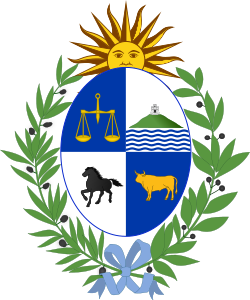 |
|---|
Parliamentary elections were held in Uruguay on 29 November 1925. [1] Although the National Party won the most seats as a single party, the various factions of the Colorado Party won over half the seats in the Chamber of Representatives. [2]
 |
|---|
Parliamentary elections were held in Uruguay on 29 November 1925. [1] Although the National Party won the most seats as a single party, the various factions of the Colorado Party won over half the seats in the Chamber of Representatives. [2]
| Party and lema | Votes | % | Seats | +/– | |||
|---|---|---|---|---|---|---|---|
| Colorado Party | Batllista Colorado Party | 106,693 | 39.30 | 50 | +1 | ||
| Gral. Rivera Colorado Party | 16,302 | 6.01 | 7 | –1 | |||
| Radical Colorado Party | 8,436 | 3.11 | 3 | –2 | |||
| Colorado Union of Durazno | 2,318 | 0.85 | 1 | New | |||
| Agrupación Colorada Batllismo Libre | 868 | 0.32 | 0 | – | |||
| Total | 134,617 | 49.59 | 61 | –2 | |||
| National Party | 122,530 | 45.14 | 57 | –1 | |||
| Communist Party | 4,838 | 1.78 | 2 | +1 | |||
| Radical White Party | 4,677 | 1.72 | 2 | New | |||
| Civic Union | 2,999 | 1.10 | 1 | 0 | |||
| Socialist Party | 1,794 | 0.66 | 0 | 0 | |||
| People's Agrarian Party | 13 | 0.00 | 0 | New | |||
| Total | 271,468 | 100.00 | 123 | 0 | |||
| Registered voters/turnout | 331,743 | – | |||||
| Source: Bottinelli et al. [3] | |||||||